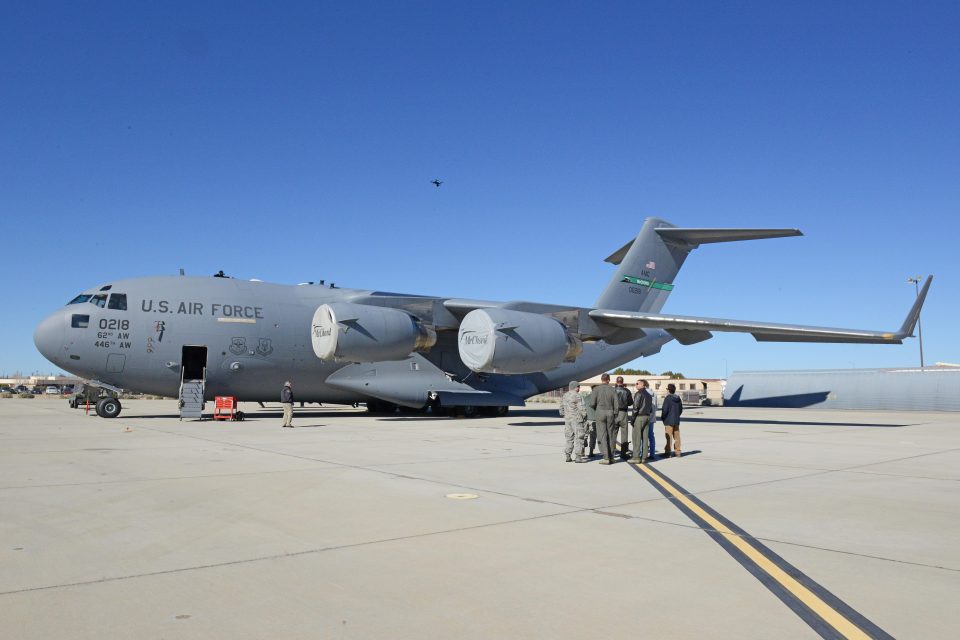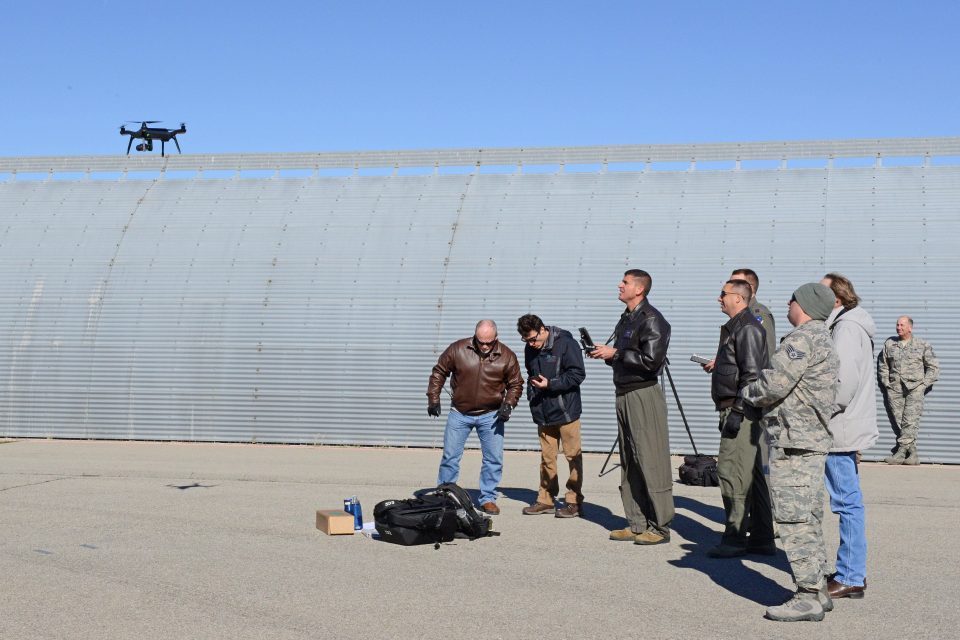The RAAF’s 36 Squadron is using the popular DJI Phantom 4 drone to conduct visual inspections of its C-17 Globemaster transport aircraft.
Using the consumer-level drone, which retails for around $1,100, means 36SQN maintenance personnel can inspect hard-to-access areas of the aircraft, including its 16.8-metre high vertical stabiliser, for paint and surface damage, without using elevated platforms or having to climb through the aircraft.
The RAAF’s 36SQN operates eight Boeing C-17s from RAAF Base Amberley.
Every 180 days each C-17 undergoes a ‘home station check’, which includes an inspection of aircraft paint and surface damage. Using the drone for those inspections takes as little as 30-minutes.
“This helps the aircraft surface finishers to identify and track paint degradation on the upper surface of the C-17A, triage paint defects and plan remediation work,” 36SQN senior engineering officer Squadron Leader Evan Smith said.
Using the Phantom drone to capture high-resolution images and video also allows a history of the aircraft’s paint and surface damage to be recorded.
“We’re bedding down the procedures for these inspections, and will investigate expanding our use of the drone to include other upper surface inspections,” SQNLDR Smith said.
“That includes flight servicings or other general unserviceabilities.”
The rest of the story can be read on Australian Aviation which published the story on November 27, 2018.
When we visited earlier this year with the Air Mobility Group, its Commander highlighted how the RAAF approached innovation within the force.
Air Commodore “K-9” Kourelakos underscored that the RAAF relies on a risk-management approach as the warfighters work through the use and evolution of new equipment, in order to get it into the force as rapidly as feasible.
“We do a good job of teaching our airmen and airwomen to think about risk management.
“As they’re going through hiccups and dealing with problems, they are asking a key question: “Can we actually do this? And to do so, what kind of risk are we taking?”
“If they think it is something really serious, they’ll put the flag up and highlight their judgment that we should not go ahead with a specific action.
“Put in clear terms, there’s a process view of life, and there’s an impact or effects view of life, and we are focused on giving the war-fighter an effects view of life.”
In another story about the use of the drone in the maintenance appraoch to the RAAF’s C-17, the author highlighted as well how the RAAF approached innovation.
RAAF Commander Air Mobility Group air commodore William Kourelakos said:
“This is an excellent example of bottom-led innovation from No 36 Squadron in response to the Air Force Safety Always Program (ASAP).
“Introducing this drone and these procedures goes further to reducing Workplace Health and Safety risks to so far as reasonably practicable.
“Air Mobility Group is investigating its applicability across the Air Mobility fleet.”
The USAF has been testing a similar approach at Edwards AFB.
A story published by the USAF on March 10, 2017 highlighted the test and the approach by the USAF.
EDWARDS AIR FORCE BASE, Calif. (AFNS) — The 412th Test Wing’s Emerging Technologies Combined Test Force used a quadcopter to conduct a maintenance inspection of the exterior of a C-17 Globemaster III here March 6, 2017.
The C-17 was on loan from Joint Base Lewis-McCord, Washington. It was the first time the CTF flew a small unmanned aerial system on the flightline and the second time the CTF has used a sUAS in a new application that shows promise.
The winds remained manageable and allowed the test team to conduct three sorties with the quadcopter, which was fitted with a video camera. Live video was assessed by the team that included maintainers, to determine if the quality was adequate for routine inspections. The video recorded from the quadcopter’s camera will be analyzed to see if it is clear enough to see smaller details of the cargo plane’s exterior such as structural abnormalities, rivets and cracks.
Maj. Dan Riley, the CTF director said, the test was so successful that the maintainers used the data to sign off their preflight external inspection, a first for the Air Force.
“This could save (maintainers) a lot of time,” said Staff Sgt. Joshua Jaburek, of the 62nd Aircraft Maintenance Squadron at JB Lewis-McChord. “When we go on top of the airplane, we can only walk on certain parts and then we have to hook and unhook our (safety harness) very few feet.”
Inspections that would normally take 45 minutes to an hour could be done just in a few minutes with a quadcopter if it’s successful. Maintainers also would not need a lift to inspect a C-17’s tail, Jaburek said.
Capt. Justin Merrick, a CTF lead engineer said, the CTF got the idea from seeing a video online showing a commercial airline company using a sUAS to inspect a plane.
“(Leadership) encourages us to go out and conduct tests, so after we saw some videos online we contacted some maintainers here and they were very enthusiastic to help out,” Merrick said.
Riley added that this first test on the flightline could pave the way for future sUAS tests and test procedures.
“Another reason we’ve conducted this test is to open the aperture on flying a sUAS near the airfield, which has been frowned upon in the past,” Riley said. “As we execute these missions it establishes a baseline for how operations can be conducted safely, not only here at Edwards, but at other bases as well. We couldn’t have accomplished what we have so far without the support of the 412th Operations Group and test wing commander in breaking down some of the barriers to these types of operations.”
Riley said the CTF is looking at a variety of other missions in the near future such as roof inspections, airfield inspections and environmental-concern area inspections.
In February, the newly formed CTF began testing a quadcopter to determine if it was possible to use the sUAS to calibrate the 412th Range Squadron’s telemetry antennas on base. Those tests also yielded positive results.
The CTF was officially activated last July and its mission is to provide agile, innovative flight test capabilities for emerging technologies and to explore the Air Force warfighting capabilities of tomorrow. Current focuses are on the use of sUAS for testing and operational use, and on autonomous systems’ development and use.
The featured photo shows Australian Army soldier, Sergeant Andrew Whitelaw, from 16 Air Land Regiment and Corporal Kelvin Green, Aircraft Surface Finisher at Royal Australian Air Force No.36 Squadron, launching a drone to inspect the condition of paint on the upper surfaces of a C-17A Globemaster on the flightline at RAAF Base Amberley.




